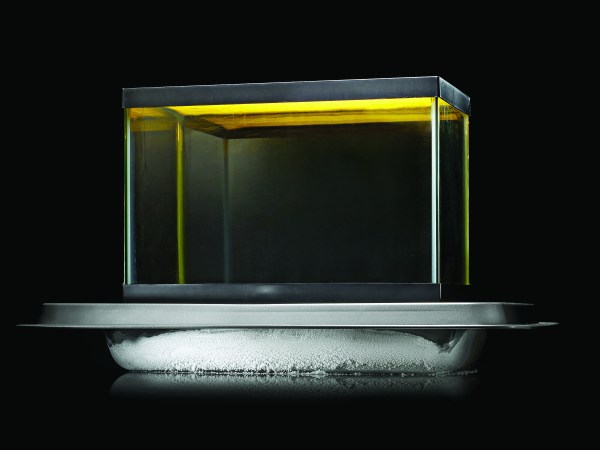

After the apocalypse, your big, fancy television will be dead–no power, no TV. So loot the corpse and use its parts to build the original broadcast entertainment: radio.
A radio transmitter sends information across a room, or an ocean, by creating a carrier wave of alternating current. Modulating the amplitude, or height, of that wave with an electrical signal (like the one produced by a microphone) encodes sound. Amplitude modulation (AM) was the first radio broadcast method and is still in wide use.
To pick up radio waves, I needed a receiver to isolate the signal representing audio. I built a simple crystal radio from a hulking Zenith television I found on the street. First, the radio required an antenna–the larger, the better–so I harvested wire from the TV and ran it up two flights of stairs, out the window, and down the side of the building.
Next, I built a tuned circuit to match the frequency of the carrier wave from any given station. I coiled magnet wire from the Zenith’s shielding shroud around a nonconducting center, a.k.a. a beer bottle. Then, I sanded conductive points along the coil and rigged a movable connector. By changing contact points, I could change the length of the coil until I matched the desired frequency.
Pairing the coil with an adjustable capacitor made from tubes of tinfoil and paper strengthened the reception. I moved the tubes to adjust the radio’s volume. The circuit then needed a diode–I found a germanium one in the TV’s circuit boards. It changed the carrier wave into direct current, leaving the signal behind. Finally, a ground connection completed the circuit.
But I still needed a way to listen. Since the radio pulled electricity entirely from the radio waves, it didn’t have enough power for normal headphones. A buzzer from a broken alarm clock did the trick, and I didn’t mind the tinny sound.
I was somewhat shocked that the assembled radio worked. Next up is building a radio transmitter so when all media collapses, I’ll be set to entertain myself.
This article was originally published in the May 2015 issue of Popular Science, under the title “A Radio Built From A Junked TV.”















